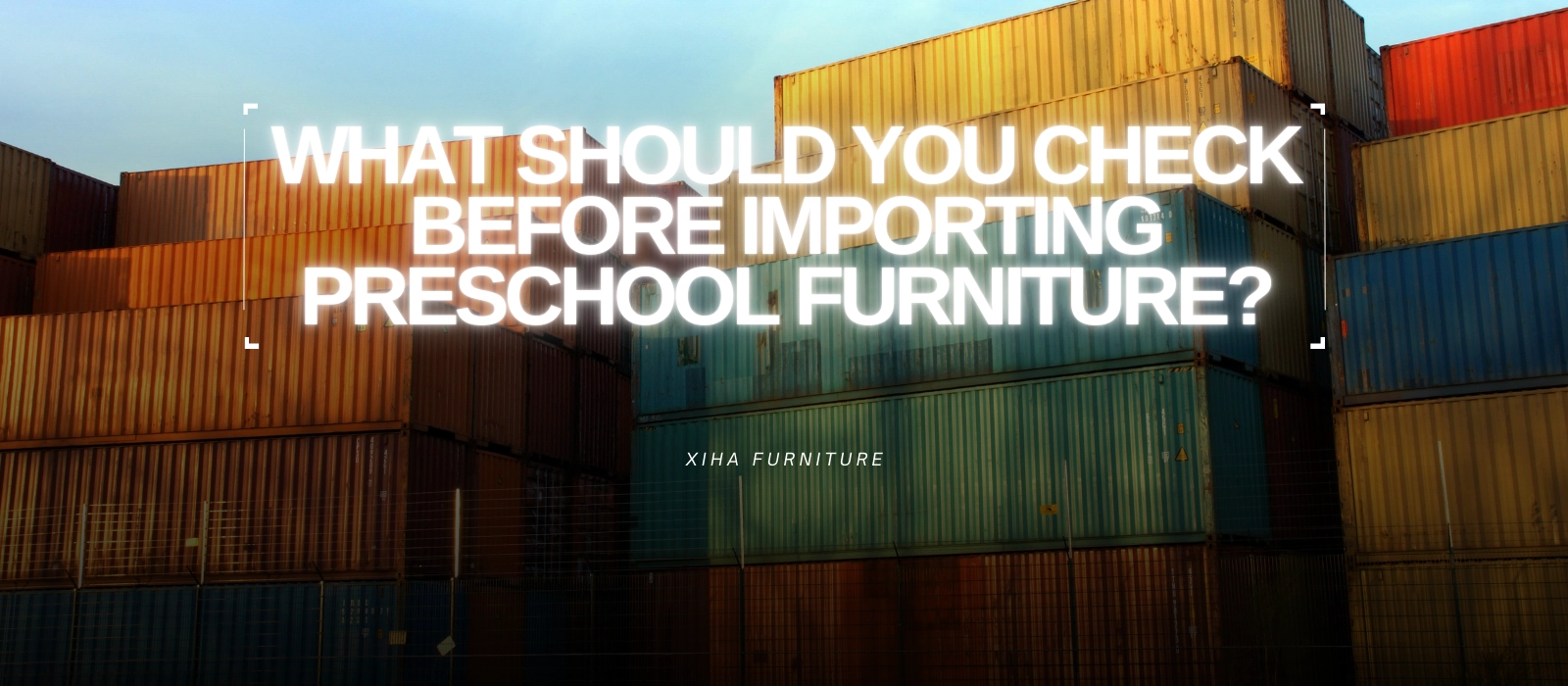Are you worried the preschool furniture won’t arrive before your kindergarten opens? Concerned about product safety, missing certifications, or suppliers who don’t deliver as promised? Maybe you’re overwhelmed by unfamiliar shipping terms, or unsure how to evaluate quotes from different preschool furniture suppliers?
Importing preschool furniture isn’t just about choosing what looks nice in a catalog—it’s about making sure the furniture is safe for children, meets your country’s certification standards, arrives on time, and matches your budget. If any step is overlooked, it could delay your opening or worse, put kids at risk. That’s why checking every detail before placing your order is not only smart—it’s essential.
This article will walk you through a full checklist, based on my years of experience working directly with international kindergarten owners. Let’s make sure you avoid the common pitfalls and set your kindergarten up for success.
Understand Your Preschool Furniture Needs
Before we even start talking to preschool furniture suppliers, it’s crucial to define what you actually need for your kindergarten. Many buyers make the mistake of jumping straight into product catalogs, only to later discover they missed key items, over-ordered unnecessary furniture, or chose models that didn’t meet age-specific safety needs.
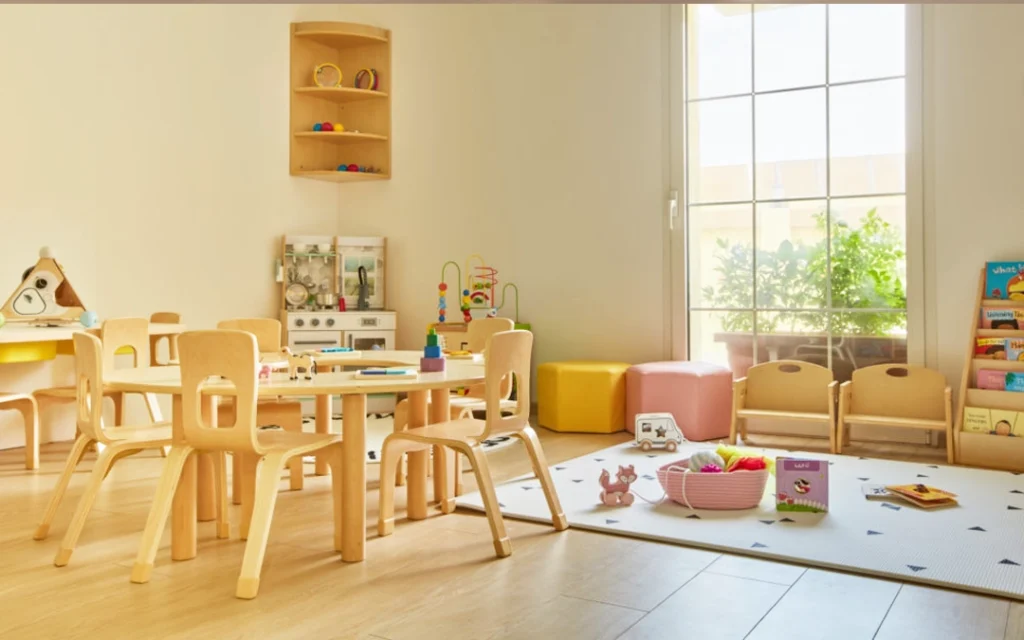
Plan According to Your Kindergarten’s Layout and Class Size
Start by evaluating your physical space. Is your kindergarten a single classroom or a multi-room facility? How many children will you serve? Are they all in the same age group or in mixed-age settings? Each of these factors will affect the type and quantity of furniture you’ll need.
For instance:
- Toddlers (1–3 years) need lower tables, rounded edges, and sturdy seating that allows for frequent movement.
- Preschoolers (3–5 years) benefit from more structured seating, varied learning zones, and soft play areas.
- Mixed-age classrooms often require adjustable-height tables and stackable furniture for flexibility.
Planning ahead ensures that your layout supports safe, organized movement throughout the day.
Identify the Core Furniture Categories
Most kindergartens will need a combination of the following categories:
- Tables and chairs (classroom sets, art tables, snack time seating)
- Storage units (cubbies, bookshelves, toy bins)
- Soft play equipment (mats, foam blocks, climbing areas)
- Role-play furniture (kitchens, market stalls, puppet theaters)
- Rest furniture (cots, nap mats, bean bags)
- Outdoor furniture (benches, picnic tables, sand & water tables)
By organizing your needs this way, you can communicate more effectively with wholesale preschool furniture companies and avoid wasting time on irrelevant options.
Match Furniture with Educational Philosophy
Is your kindergarten Montessori-based? Reggio Emilia? Waldorf? Each teaching philosophy has its own approach to furniture layout, materials, and child interaction. For example:
- Montessori classrooms emphasize natural materials, low open shelving, and child-led accessibility.
- Reggio Emilia-inspired schools prioritize collaboration areas and aesthetic, welcoming environments.
- Waldorf settings often use wood and warm textures, with minimal plastic.
Your philosophy will shape the kind of preschool furniture for sale that fits best with your vision.
Set Your Budget and Prioritize Must-Haves
Be realistic about what your budget allows and prioritize essentials first. Many preschool furniture suppliers offer package deals or volume discounts for complete sets. At XIHA, we often help clients design a full-room solution with both functionality and cost-effectiveness in mind.
You don’t need to furnish the entire school in one go. Focus first on what’s needed to legally and safely open the classroom. Add specialized or decorative items later as enrollment increases.
Avoid Over-Customization in Early Orders
While customization is often appealing, going too far with non-standard sizes or materials in your first order may lead to longer production times and higher costs. Unless it’s mission-critical, stick to proven models with good export track records.
Later, once the supplier relationship is built and you’ve gained feedback from your classroom usage, you can begin to explore customized designs.
Ask Your Supplier for a Suggested Layout Plan
The best preschool furniture companies don’t just ship boxes—they help you think through room layout. At XIHA, we offer clients free layout guidance based on your room size and age group. This saves time and ensures every piece fits both the space and the curriculum.
Remember, understanding your actual preschool furniture needs is the foundation for everything that comes next. Without this clarity, it’s impossible to judge whether a quote is fair or whether a product fits your goals.
Research Reliable Preschool Furniture Companies
Once you understand what you need, the next step is identifying which preschool furniture companies can actually deliver on those expectations. Not all suppliers are created equal—especially when it comes to international exports.
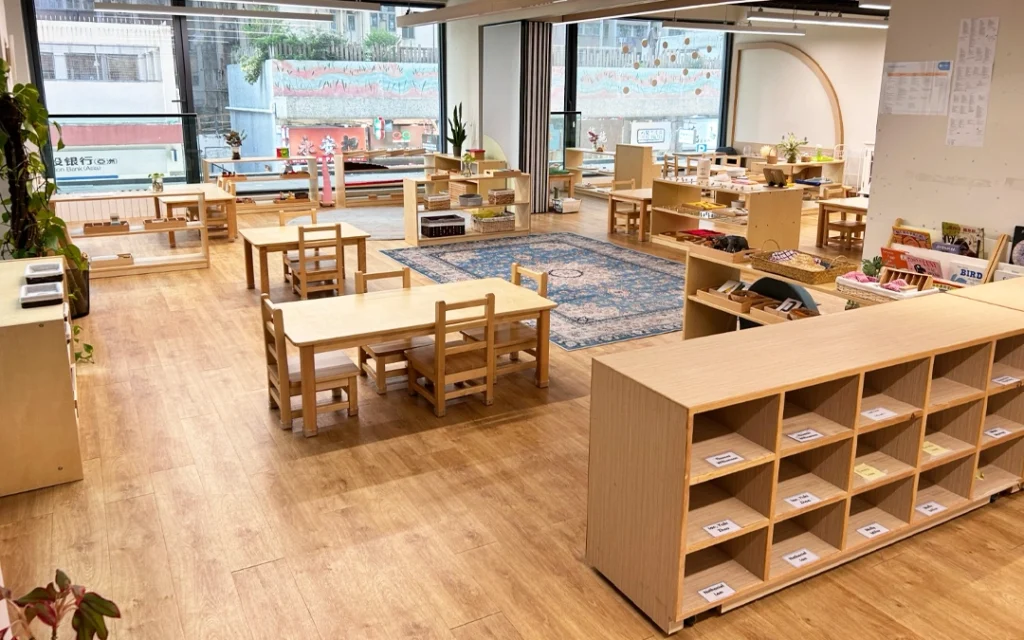
Verify Their Factory and Export Credentials
First, check whether the supplier truly manufactures their furniture or just acts as a middleman. Real preschool furniture suppliers will have their own production facilities, not just flashy websites. Ask for:
- Factory photos or video tours
- Business license and export license (if you’re buying from China)
- Product catalogs showing production capability
At XIHA, for example, we provide full transparency by offering factory tours (in-person or virtual) and detailed production breakdowns. We also hold export certificates recognized in North America and Europe.
Look for Proven Export Experience
It’s not enough that a company sells domestically—they need to understand international regulations. A supplier who routinely exports to the U.S., Canada, Australia, or Europe will already be familiar with compliance requirements, safety standards, labeling, and logistics.
Ask:
- Which countries do you export to most?
- Can you provide client references or case studies?
- Do your products have relevant certifications (like ASTM, EN71, ISO)?
An experienced wholesale preschool furniture provider will be ready to answer these questions confidently.
Evaluate Their Product Range and Specialization
Some companies focus only on home furniture and add a few children’s items. Others, like us at XIHA, specialize entirely in preschool furniture wholesale, meaning everything from our design team to quality control processes are built with kindergartens in mind.
Look for companies that offer:
- Full classroom solutions (tables, chairs, storage, play furniture)
- Age-appropriate sizing and materials
- Customization for specific age groups or educational philosophies
The more focused a company is on early childhood education, the more likely they are to meet your needs.
Check Online Presence and Third-Party Reviews
Legitimate preschool furniture companies will have a professional online presence, including:
- An official website
- Verified Alibaba storefront (with transaction history)
- Participation in trade shows (like Canton Fair, Kind+Jugend, etc.)
- Google reviews, B2B review platforms, or testimonials
Don’t forget to check how long the business has been operating. A supplier with 10+ years of experience is far more trustworthy than a newly created listing with stock images.
Test Their Communication and Responsiveness
Your first few emails or messages are a great test of professionalism. Do they:
- Respond quickly and clearly?
- Provide full answers, not just vague sales talk?
- Offer technical specs, safety certificates, or project proposals?
At XIHA, we treat every inquiry as a long-term relationship opportunity. We provide clients like Mark Sheung with detailed PDF quotes, CAD layout plans, safety certifications, and logistics timelines within 24–48 hours.
A reliable supplier understands that importing preschool furniture is a major investment—so their support should reflect that.
Check Product Safety Standards and Certifications
Safety is non-negotiable when it comes to preschool furniture. Whether you’re opening a kindergarten in the U.S., Canada, Europe, or Australia, your furniture must meet strict safety standards. Failure to comply could result in penalties, delays, or—worse—accidents involving children.

Know the Key Safety Standards by Region
Each country or region has its own safety regulations for early childhood furniture. Some of the most important include:
- United States: ASTM F963, CPSIA (Consumer Product Safety Improvement Act), GREENGUARD Certification
- Canada: CCPSA (Canada Consumer Product Safety Act), CARB-2 compliant wood
- Europe: EN71 (Parts 1–3 for physical, chemical, and mechanical safety), REACH regulation
- Australia: AS/NZS ISO 8124, as well as local fire retardant regulations
Your supplier should know these by heart. If they hesitate or respond vaguely when you ask about them, that’s a red flag.
Confirm the Use of Child-Safe Materials
Not all materials are created equal. Ask your supplier to confirm the following:
- Formaldehyde-free boards or CARB-2 compliant plywood
- Non-toxic paint and finishes, tested for lead and heavy metals
- Soft edges and anti-pinch hardware
- Fire-retardant foam and fabric where needed (especially for nap mats and soft seating)
These materials aren’t just marketing points—they’re safety imperatives.
At XIHA, every piece of preschool furniture we produce goes through material screening and quality assurance testing. We proactively provide third-party lab reports so you don’t have to chase them down.
Request Third-Party Test Reports
Always ask for verifiable third-party certification reports. These might come from organizations like:
- SGS
- TÜV Rheinland
- Intertek
- Bureau Veritas
Test reports should clearly show:
- Testing date
- Applicable standard (e.g., EN71-3 or ASTM F963)
- Test results (pass/fail)
Having these on file is also crucial if you’re ever asked to prove safety compliance by government officials, insurance providers, or parents.
Understand Labeling and Warning Requirements
Some countries require child furniture to include specific safety warnings or labeling in local languages. Your supplier should be familiar with this and offer:
- Stickers or engravings that meet requirements
- Language translation options
- Optional branding or school logos that do not interfere with compliance
Make sure to confirm all labeling before production begins to avoid customs issues later.
Inspect Sample Products Carefully
If possible, always ask for a sample before placing a bulk order. Even if you trust the supplier, a hands-on review can help you:
- Spot issues not visible in photos
- Test material sturdiness and finishes
- Confirm color accuracy and build quality
You can also ask your supplier to record a high-resolution product demo if shipping a physical sample isn’t feasible.
Safety is not an area where you should cut corners. The right preschool furniture suppliers will proactively address all of these points—and treat your compliance as seriously as you do.
Evaluate Production Time and Delivery Schedule
One of the most common mistakes new buyers make when importing preschool furniture is underestimating the time it takes from order to delivery. With opening dates set months in advance, you simply cannot afford delays.
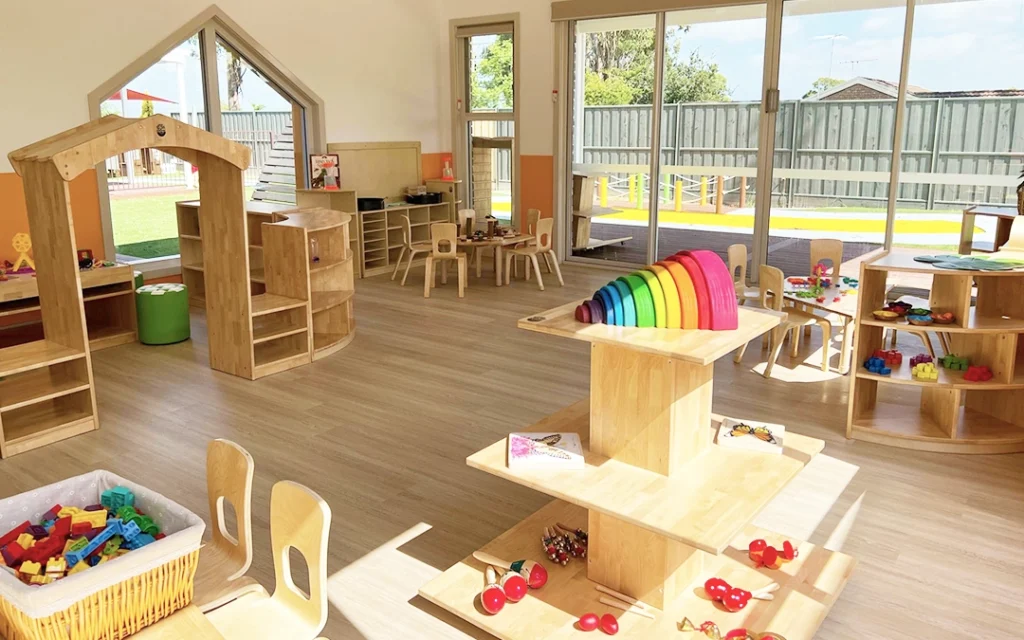
Ask for a Realistic Production Lead Time
Different furniture items have different production schedules. Soft play sets might take just 7–10 days to produce, while customized storage units could take 25–30 days. Always ask:
- How many days does each item take to manufacture?
- Are the products in stock or made-to-order?
- Can the supplier show you a production calendar?
Experienced preschool furniture suppliers like XIHA will provide lead times clearly by product category and update you weekly on production progress.
Confirm Buffer Time for Quality Checks and Packing
Even after furniture is produced, additional time is needed for:
- Final inspection
- Assembly and test fitting
- Export-quality packaging
- Container loading coordination
Plan for at least 3–5 buffer days after production ends to ensure nothing is rushed or missed.
Understand Your Shipping Options (And Their Timelines)
Depending on your budget and location, you’ll have multiple freight options:
- Full Container Load (FCL): Fastest for bulk orders; less handling
- Less than Container Load (LCL): Flexible for smaller quantities but may take longer
- Air Freight: Very fast but very expensive
Approximate delivery times:
- China to U.S. West Coast (FCL): ~18–25 days
- China to Canada (Vancouver/Toronto): ~20–28 days
- China to Europe (Rotterdam): ~30–35 days
You can verify port schedules on logistics platforms like Maersk or Freightos.
Choose a Supplier Who Supports Consolidation and Logistics
A good supplier helps beyond production. Ask:
- Do you help consolidate from other vendors into one container?
- Can you assist with export documents, customs, and insurance?
- Do you offer DDP or door-to-door services?
At XIHA, we handle everything from consolidation to customs clearance for our overseas partners. This is especially helpful for new clients who are unfamiliar with import logistics.
Align Your Delivery with Your Kindergarten’s Opening Timeline
Here’s a sample backward timeline you can adapt:
- Opening Date: Sept 1
- Delivery Needed On Site: Aug 15
- Shipping Departure Date: July 15
- Production Completion: July 10
- Order Confirmed and Paid: June 10
That’s 80–90 days from order to opening day—very realistic and safe.
Late arrivals can cost you more than money—they can cost your credibility with parents. Be safe, not sorry.
Clarify Shipping, Packaging, and Logistics
Even if you’ve selected the perfect products from trustworthy preschool furniture suppliers, poor logistics can ruin everything. Shipping delays, damaged goods, or customs complications are all preventable—if you plan ahead.
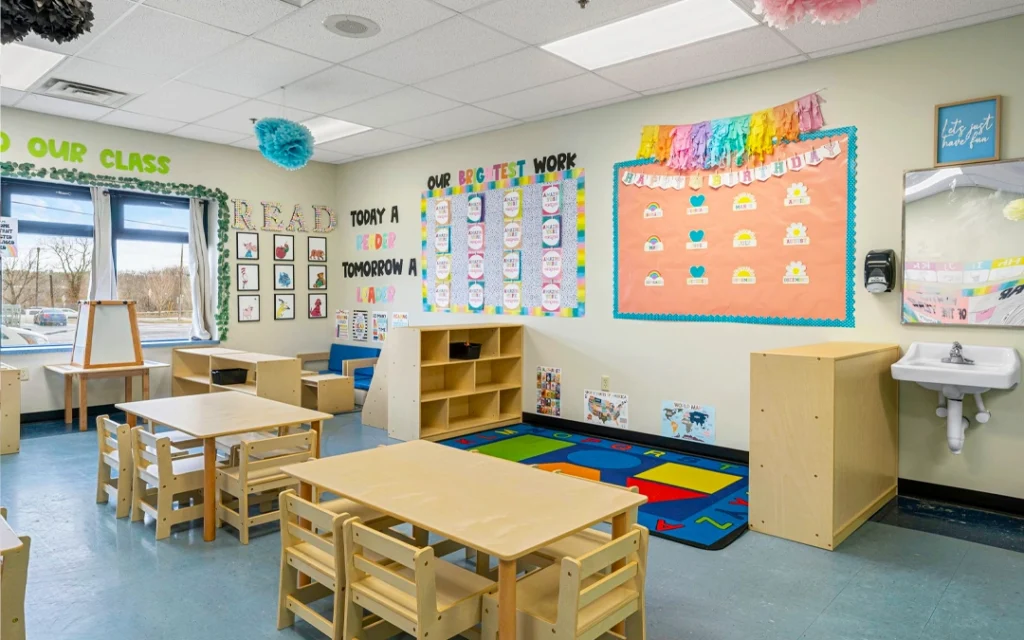
Choose the Right Incoterm for Your Needs
One of the most misunderstood parts of international trade is Incoterms. These three-letter terms define who handles what in the shipping process. For example:
- EXW (Ex Works): Buyer handles all logistics from the factory gate.
- FOB (Free on Board): Supplier delivers to port; buyer handles sea freight onward.
- CIF (Cost, Insurance, Freight): Supplier covers sea freight and insurance to destination port.
- DDP (Delivered Duty Paid): Supplier delivers all the way to your door, duties included.
For first-time importers, DDP or CIF is the safest option—fewer surprises. Learn more about Incoterms from ICC’s Official Guide.
Ensure Export-Grade Protective Packaging
Preschool furniture is bulky and often includes delicate edges or finishes. Ask your supplier to confirm:
- Double-layer corrugated cartons or wooden crates
- Corner protectors and stretch wrap
- Foam inserts for soft-play or painted surfaces
- Moisture-resistant pallets
At XIHA, we use export-grade cartons with anti-collision foam and waterproof inner linings. We also offer custom logo printing on cartons for clients who want to enhance brand perception.
Confirm Container Loading Methods
Improper loading can lead to:
- Crushed edges or scratches
- Wasted container space = higher cost per unit
- Shifting during transit = broken items
A reliable supplier will provide loading photos or videos to show how products are arranged and secured inside the container. We recommend asking for:
- Pre-shipment inspection reports
- Loading diagrams
- Weight distribution sheets
This level of detail is essential to ensure your wholesale preschool furniture arrives in perfect condition.
Ask for Help with Export & Import Documents
International shipping involves paperwork. The right supplier helps you handle it with ease. Essential documents include:
- Commercial Invoice
- Packing List
- Certificate of Origin
- Bill of Lading
- Product Safety Certificates
- Fumigation Certificate (for wooden materials)
If any of these are missing or incorrect, your furniture could be delayed at customs. At XIHA, we prepare all documentation in advance and offer digital copies before cargo departs.
Track Your Shipment with Transparency
Whether you’re importing one classroom or ten, you’ll want to know:
- Has production finished?
- When did the goods ship?
- Where is the container now?
Your supplier should provide tracking numbers, freight forwarder contacts, and regular updates. Better yet, choose a partner who gives you real-time status reports.
Understand the Full Price Breakdown
When comparing quotes from different preschool furniture suppliers, you might see wide variations in pricing. To make informed decisions, you must understand what’s actually included in each quote—and what’s not.

Know What’s Included in the Unit Price
Don’t assume that all quotes include the same services. Ask clearly:
- Is the price EXW, FOB, CIF, or DDP?
- Does it include packaging?
- Are any accessories (like screws, tools, or trays) included?
- Does the price reflect customizations or only standard models?
At XIHA, we clearly label every component in our quotation sheet, so there’s no confusion.
Account for Hidden and Variable Costs
Here are some common fees buyers forget to include:
- Customs duties and taxes in your country
- Port handling fees at destination
- Delivery from port to kindergarten
- Currency exchange charges
- Bank wire fees
To estimate these, use calculators like SimplyDuty or consult your freight forwarder.
Compare Shipping Scenarios
Shipping costs can vary dramatically depending on quantity and route. For example:
- A 20ft container may cost $1,600 from China to LA
- The same container to Toronto could be $2,400
- Sending a few pallets via LCL may seem cheaper, but per-unit cost is higher
Discuss scenarios with your supplier and freight agent. XIHA regularly helps clients compare LCL vs. FCL for cost-effectiveness.
Understand Payment Terms and Currency Risks
Ask suppliers:
- Do you accept USD, EUR, CAD?
- What’s the deposit and balance schedule?
- Can we use Trade Assurance (Alibaba) or PayPal for security?
- Are prices fixed or do they vary with exchange rates?
We recommend confirming all terms in writing before production begins. For new importers, it’s also wise to build payment stages based on order milestones.
Use a Total Landed Cost Calculator
To get the real picture, calculate the Total Landed Cost:
Product Cost + Freight + Insurance + Duties + Local Delivery = Real Cost
Understanding the complete cost breakdown ensures your budget is accurate—and avoids surprises that could impact your kindergarten’s opening.
Inspect Samples or Request Virtual Demos
Before you confirm a large order with any preschool furniture suppliers, it’s vital to see real product samples or request a virtual demonstration. Visual inspection—whether in person or online—can reveal quality issues, design flaws, or miscommunications that you wouldn’t catch in a catalog.
Request Physical Samples from Preschool Furniture Suppliers
Most reliable preschool furniture suppliers will gladly provide samples for verification. Ask for:
- 1–2 pieces from different furniture categories (e.g., chair, storage unit)
- A full finish sample kit (materials, colors, edge banding, etc.)
- Child-safe product test reports bundled with the sample
When you inspect physical samples of preschool furniture, assess:
- Stability and balance
- Surface finish and paint smell
- Ease of assembly
- Material density and weight
These samples allow you to test the preschool furniture in a real classroom environment before committing to bulk production.
Request Live Video Demos or Factory Tours
If time or shipping costs make physical samples impractical, request a live video session instead. Many modern preschool furniture suppliers offer:
- Zoom or WhatsApp virtual showroom tours
- Live demonstration of furniture function and materials
- Walkthroughs of their production line and quality control process
At XIHA, we frequently conduct factory demos for international clients to build transparency. It helps kindergarten owners like Mark from Canada understand the value behind our preschool furniture wholesale process.
Ask for HD Product Photos and Client References
When evaluating preschool furniture for sale, make sure your supplier can provide:
- Real photos of past shipments
- Images of installed classrooms from other buyers
- References from other kindergartens in your region
This builds trust and confirms that the preschool furniture companies you’re working with have global experience—not just domestic business.
Evaluate Packaging of the Sample
A sample shipment is also your first look at the supplier’s packaging process. Check:
- Protection materials (foam, corners, plastic wrap)
- Labeling and part documentation
- Hardware kits and instructions
These small details reflect how your full shipment will be handled. Poor packaging on a sample usually means poor care in bulk orders.
Record Feedback and Adjust Order Specifications
Use your sample experience to make final adjustments to:
- Dimensions
- Color selections
- Surface treatments
- Edge designs
Preschool furniture that looks good in a catalog might not function well in your actual classroom layout. Make changes early—before mass production starts.
Choosing the right preschool furniture for sale is not just a matter of price, but confidence. Physical samples or live demos are the fastest way to build that confidence.
Prepare for the Kindergarten Opening with Confidence
The final step is ensuring that your preschool furniture arrives, is installed, and is ready well before the first child walks through your door. Planning this phase carefully helps avoid chaos during the most crucial moment: your kindergarten opening.
Create a Countdown Plan
Use a backward planning method based on your opening date. Work with your preschool furniture suppliers to set realistic milestones. A typical timeline might look like this:
- 90 Days Out: Confirm all orders, approve drawings, and finalize payment terms.
- 60 Days Out: Track production and approve pre-shipment inspection.
- 30 Days Out: Monitor shipping status and prepare import documents.
- 7–14 Days Out: Furniture arrives on-site for installation.
- 3 Days Out: Final classroom setup and safety check.
Coordinate with All Stakeholders
Coordinate between furniture suppliers, shipping agents, local installers, and your internal staff. Everyone should know their role. A delayed clearance or missing assembly team can disrupt your whole plan.
Reliable preschool furniture suppliers will help by:
- Providing updated shipping ETAs
- Connecting you with local unloading crews
- Offering installation guides or on-call support
Set Up the Classroom Strategically
Arrange furniture to align with your educational philosophy and age group needs. For example:
- Montessori setups require easy access and low shelves
- STEM corners may need height-adjustable tables
- Quiet zones benefit from soft seating and low lighting
Keep walkways clear, label all zones, and consider where adults will supervise.
Perform a Final Quality & Safety Audit
Before welcoming families, do a walk-through:
- Are all items installed securely?
- Are there any sharp edges or loose parts?
- Are fire exits, bathrooms, and storage areas accessible?
Take photos for insurance and marketing. Document any concerns and contact your preschool furniture supplier immediately if replacements are needed.
Prepare for the First Parent Impression
Remember, your preschool furniture is part of your brand. Parents judge the learning environment immediately. Clean, well-organized, and safe furniture gives confidence in your program.
At XIHA, we often assist clients with layout visuals and first-day walkthrough checklists to support a smooth transition.
Conclusion
Importing preschool furniture can be a smooth, profitable, and even enjoyable process—if you know what to check at every step. From choosing the right preschool furniture suppliers and understanding logistics, to verifying safety standards and preparing for classroom setup, each phase matters. By following the checklist in this guide, you’ll avoid costly mistakes and ensure a safe, beautiful, and timely launch of your kindergarten.
At XIHA, we’re here to support you from first contact to final installation. Whether you’re furnishing one classroom or an entire preschool chain, we’re committed to being your trusted partner in preschool furniture wholesale.

